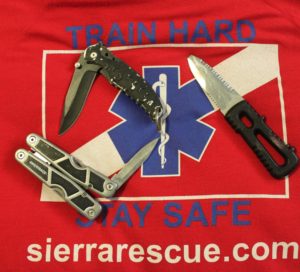The mother of all multi-day river trips in the United States might be the Colorado River through the Grand Canyon. Nowhere else can you get huge rapids, beautiful scenery, 20+ days in a remote river environment and amazing side adventures the whole way. It really is amazing, and one of my personal favorite places to be in the entire world!
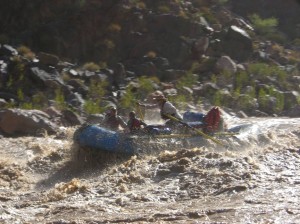
The author rows a gear boat through massive waves at Hermit Rapids. The waves here have been known to be big enough to flip boats that don’t hit the waves straight on.
That being said, an adventure of this scale has many risks involved. I was lucky to go on my first Colorado River adventure with very experienced guides and people who love and care about the river and having great experiences. Our adventure wasn’t without injuries or difficulty. Our group was separated in a side canyon by a flash flood, one person was injured and required evacuation out of Upper Elves Chasm, one got heat exhaustion while on a hike and we had a few other smaller injuries.
From all of this, I learned some valuable lessons that can be used anywhere in the world on any adventure, but are particularly relevant to rescue and safety in the Grand Canyon:
1) Have a trip leader who has experience in the Grand Canyon. This will make everyones’ trip safer and better all around from their experience and good judgment.
2) If the group splits to do a hike or other activity, make sure each remaining group has a “leader” or a plan for contingencies.
3) Make sure the boats are tied up high and far from the edge of the river, and with multiple points at camp so they cannot float away even if the river went up 10k CFS overnight!
4) “Raft” the boats together at camp by using short straps to rig each one side by side. This creates a solid platform to load/ unload and minimizes injuries at camp on rafts.
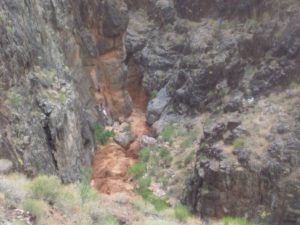
A flash flood splits a group that was hiking Shinamu Wash near Bass Camp. You can see victims stranded on the river left wall, as well as rescuers on river right.
5) Always keep the rafts together when on the river. Keep others close by through rapids incase there is a rescue needed. Divide your boats and equipment so things are relatively even weighted through the larger rapids.
6) Rig to flip every day! Even the smaller rapids in the Colorado can pack a big punch with large waves and powerful hydraulics!
7) If its raining, or even a little cloudy in the sky, stay out of the side canyons. Even canyons that are not prone to flash flooding can go up in and instant. On multiple occasions I have seen the devastation of flooding and know how dangerous it can be to be stuck in one.
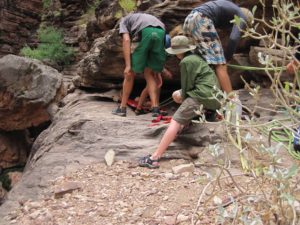
Trip members work together to evacuate a victim out of Upper Elves Chasm. The rescue took more than two hours and involved moving an incapacitated victim down steep, rocky terrain and under rocky shelves like the one in the photo. A paco pad and rope were essential to this rescue.
8) Bring extra supplies like rope, a climbing harness, and rigging gear. This is very helpful for exploring side canyons, and can be invaluable in a rescue situation.
9) Always take water if you’re going more than 100 feet from the river. The canyon is hot and unforgiving, especially to those who are not well prepared!
10) Small medical needs like cuts, scrapes, bruises and dry skin can become big medical needs if not addressed as soon as they arise. Take time to take care of these things as you go, and have a great trip down the canyon!
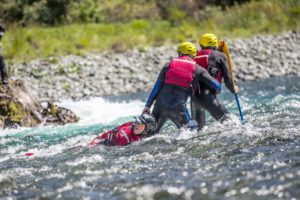

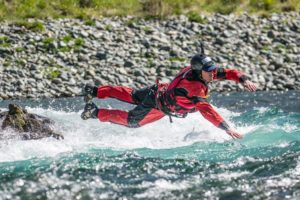
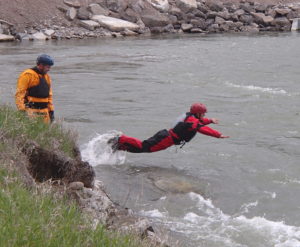
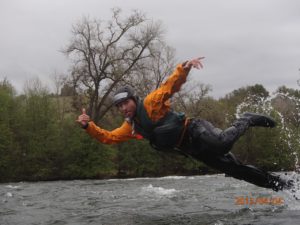
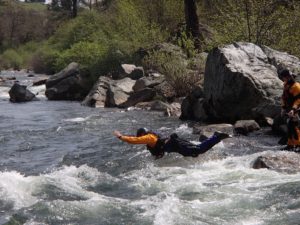
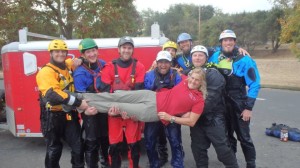
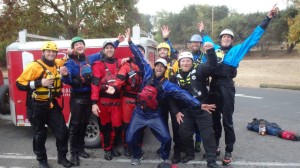


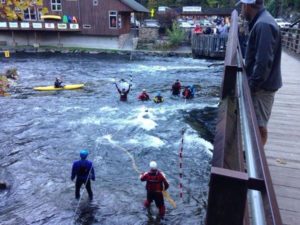

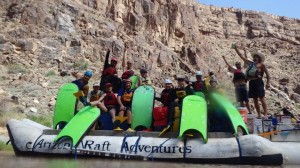
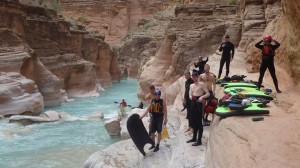
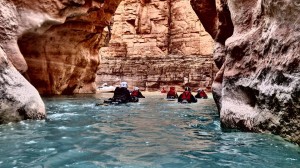
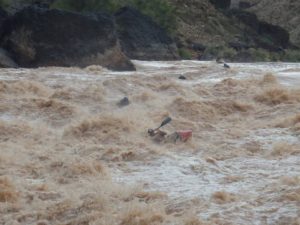
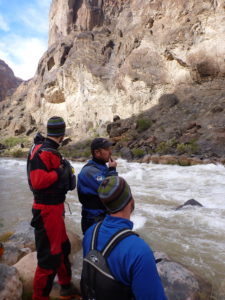

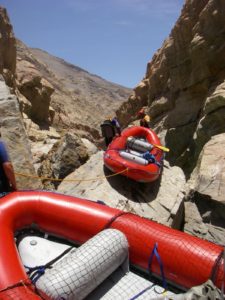


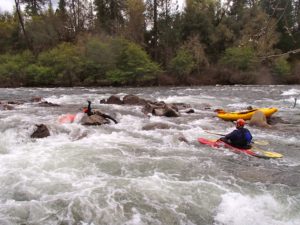
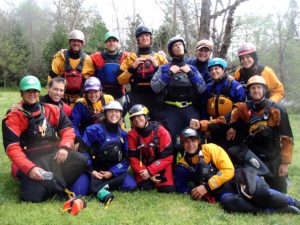



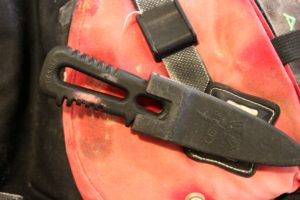 In our newly developed RRC-professional curriculum, one of the new ‘skills’ adapted from the Kiwi rescue realm centers on getting to and using a knife to self rescue under stressful conditions. The drill involves putting your foot in a loop of rope, and lowering into the current. Once “entrapped,’ you have to reach your knife and cut your foot free. Don’t worry we wont have you cut yourself free of a raft floor, but as extreme as it sounds, doing exactly that should be considered as an option if someone is heads down under a pinned / wrapped raft. Remember it’s all about airway airway airway.
In our newly developed RRC-professional curriculum, one of the new ‘skills’ adapted from the Kiwi rescue realm centers on getting to and using a knife to self rescue under stressful conditions. The drill involves putting your foot in a loop of rope, and lowering into the current. Once “entrapped,’ you have to reach your knife and cut your foot free. Don’t worry we wont have you cut yourself free of a raft floor, but as extreme as it sounds, doing exactly that should be considered as an option if someone is heads down under a pinned / wrapped raft. Remember it’s all about airway airway airway.
